Power Consumption
Two 2kW 80Plus Titanium power supplies power the system itself, but it did not use anywhere near 2kW even when we added NICs and drives. These large PSUs are for configurations with four dual-slot GPUs like we tested in the previous-generation Altra Max version of this platform.
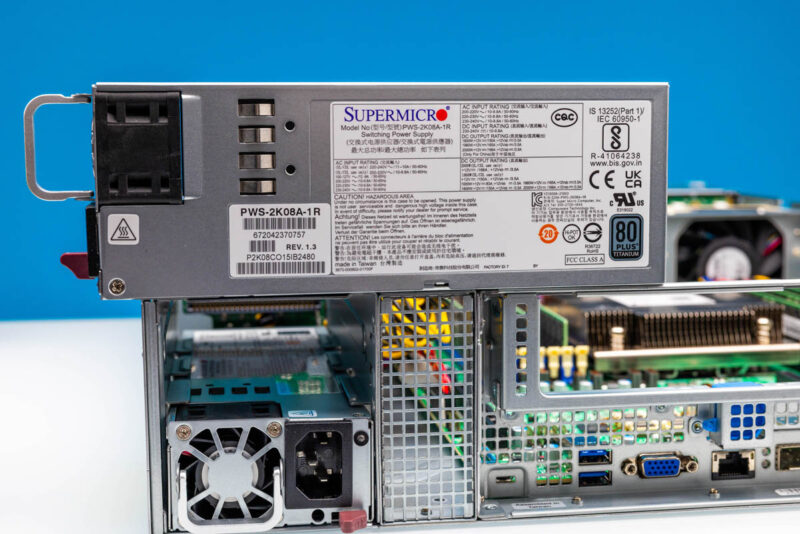
On the system power consumption, this is not a system that idled at sub 100W. Usually, we were in the 190-250W range depending on the NIC and SSD configuration.
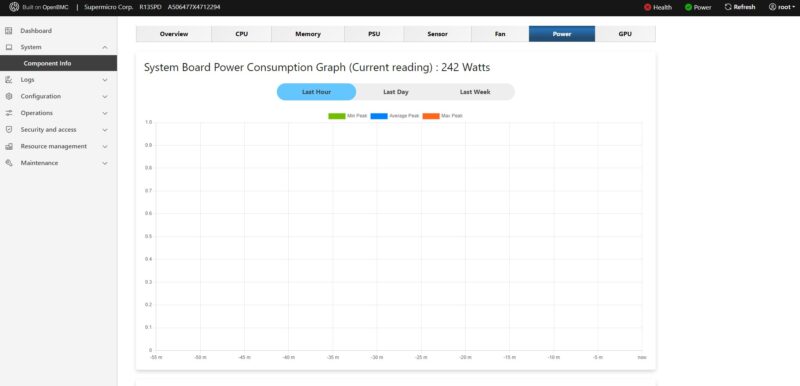
Power consumption was interesting. With a NVIDIA BlueField-3 DPU, four SSDs, and a ConnectX-6 and ConnectX-7 installed, we could get into the 800W range. With only the ConnectX-6 Dx card we would just touch 600W of maximum power consumption.
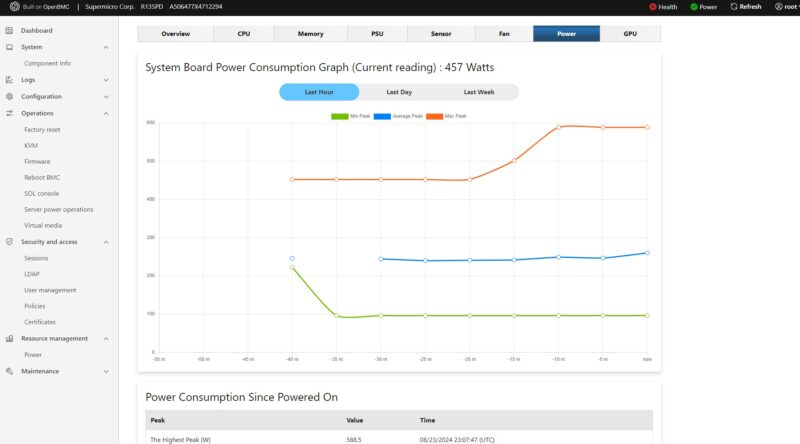
These figures are very dependent on the workload though. The above 457W reading at the IPMI (the APC PDU was just over 500W) was taken while generating this screenshot using stress-ng.
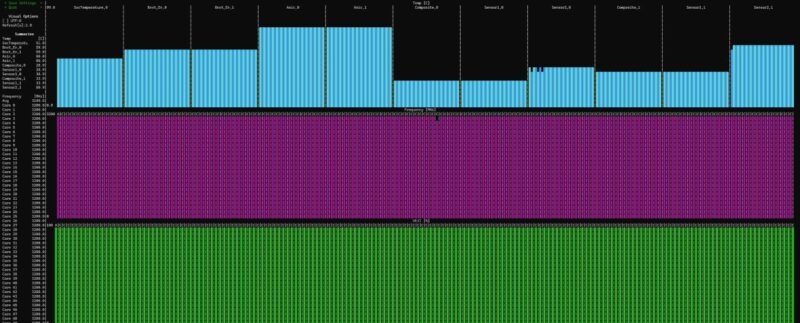
The obvious implication here is that that is more of an upper bound for the system, not a typical power consumption. If you budgeted 200-500W typical power consumption range for a server like this, then that is probably a realistic budget figure. This is more in-line with what we would expect from an Intel Xeon 6700E system on a power per core basis at the system level than a full P-core 500W SKU like Granite Rapids-AP or upcoming AMD chips we have discussed before.
STH Server Spider: Supermicro MegaDC ARS-211M-NR
In the second half of 2018, we introduced the STH Server Spider as a quick reference to where a server system’s aptitude lies. Our goal is to start giving a quick visual depiction of the types of parameters that a server is targeted at.
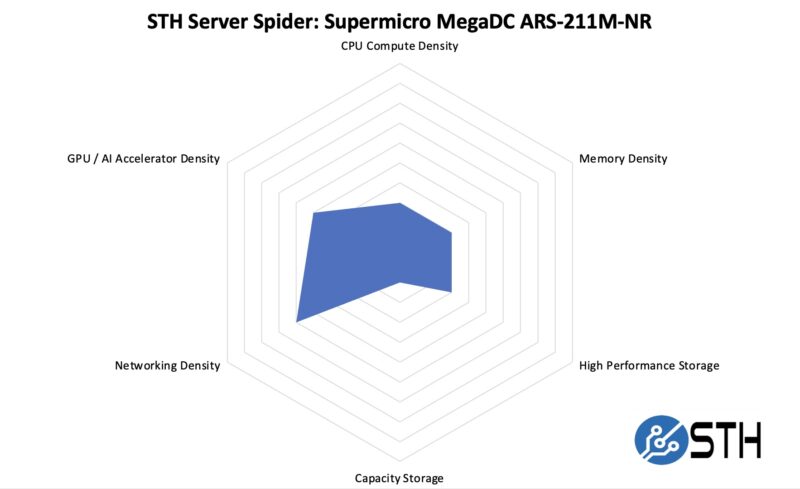
This is a bit of a funny system. It is not particularly dense, unless you use it in the 16x GPU configuration we tested the previous generation with. Still, for many racks, this is the type of density that can be expected when moving to newer and higher power systems.
Final Words
Supermicro does not have as many models of AmpereOne servers as it does Intel Xeon or AMD EPYC. On the other hand, it has something very close to its Xeon and EPYC server offerings with the ARS-211M-NR.
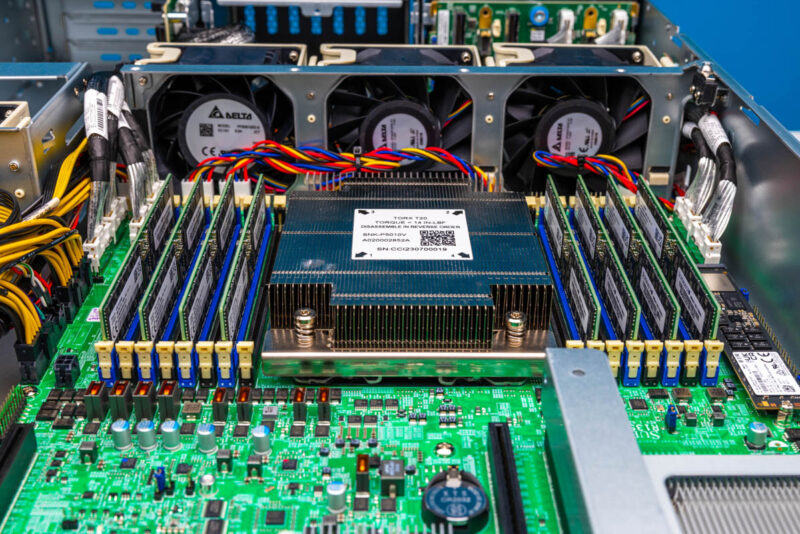
We are going to cover AmpereOne in the near future in another piece, but we at least wanted to show a really neat system. It is important that the Arm servers these days are very analogous to their x86 counterparts. If you run containerized cloud workloads, then the transition to Arm is fairly easy. Likewise, doing an apt-get install in Ubuntu on Arm and x86 feels like the same experience today. For many, the AmpereOne offering with 192 cores is going to be very attractive just because it allows one to get a lot of cores at a lower price point than the x86 vendors offer them at. We will let server vendors show their own pricing, but Ampere has published its processor price list and a 192 core AmpereOne is significantly less costly than a 144 core Intel Xeon 6700E. If you just want a lot of cores in a flexible 2U system with lots of expansion, the Supermicro MegaDC ARS-211M-NR is a cool option.


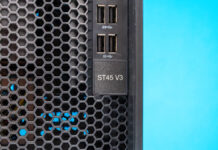
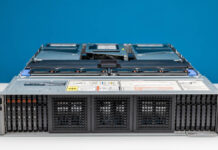
That’s great performance per dollar at least
I don’t get why you’d want a 1S not a 2S for these. If you’re trying to save money, then 2S 1 NIC shares common components except CPUs and mem so that’s much cheaper.
At idling Ampere’s power consumption seems/feels “broken” – Phoronix in its latest benchmarks with EPYC 5c does too, make this same observation.